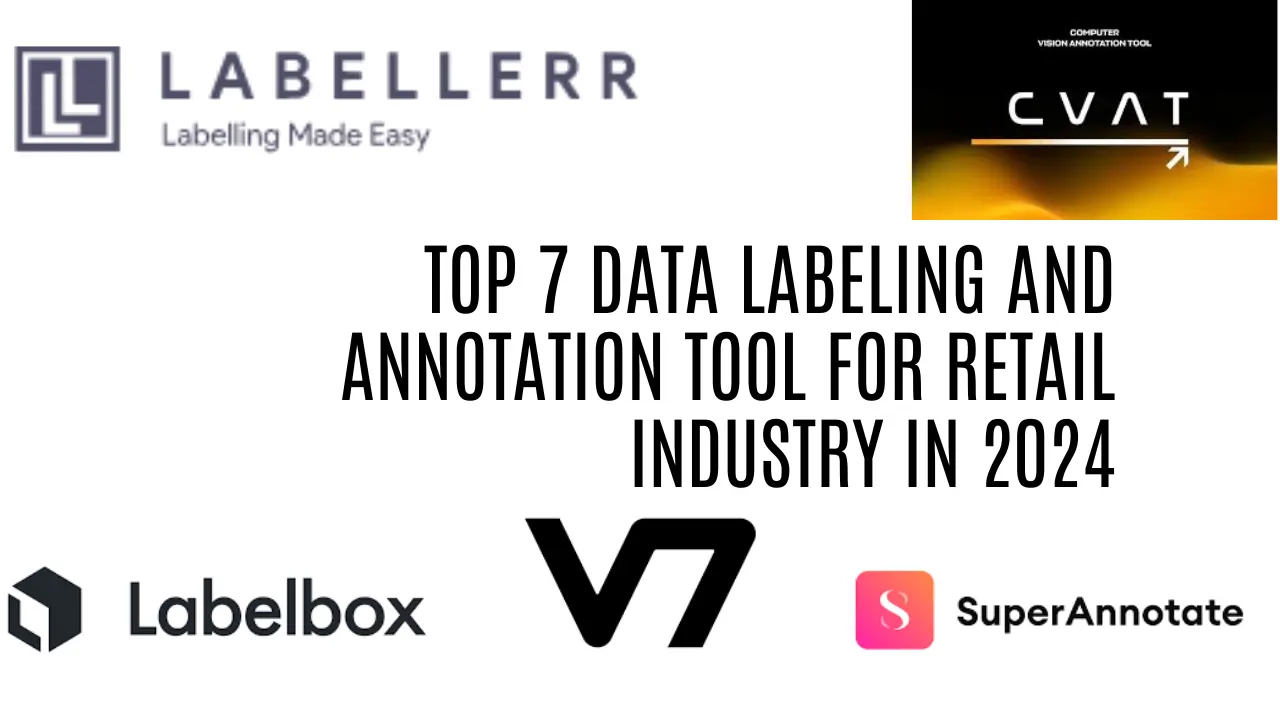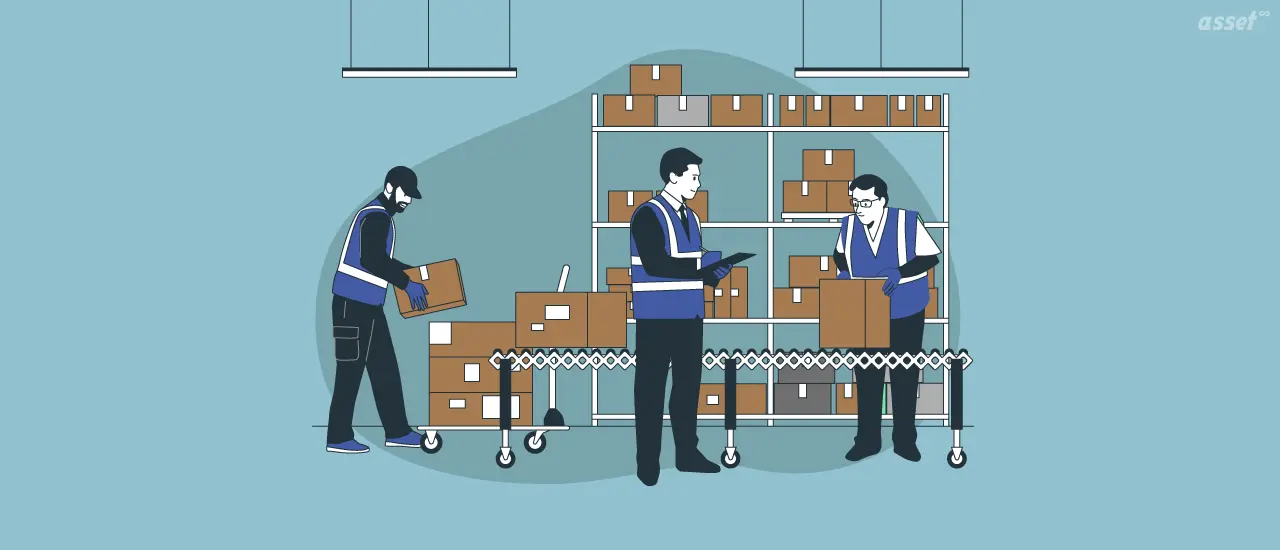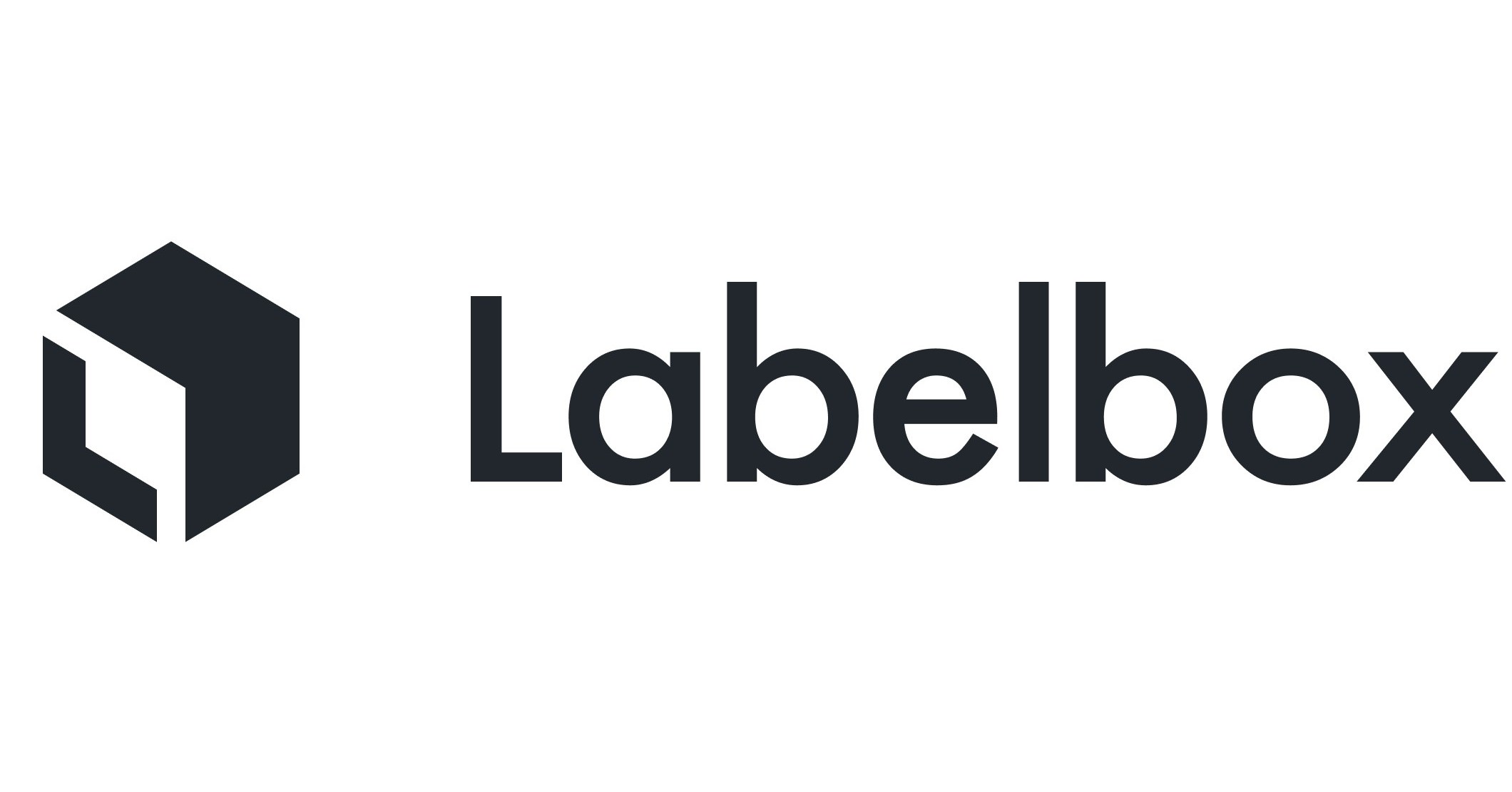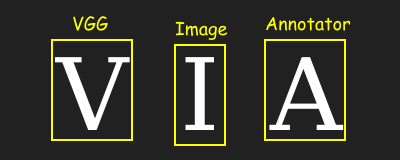Top 7 Data Labeling and Annotation Tools For the Retail Industry

In the rapidly evolving retail industry, the adoption of artificial intelligence (AI) and machine learning (ML) technologies has become crucial for gaining competitive advantages and enhancing operational efficiency.
At the core of these AI and ML applications lies the need for high-quality data, which is the foundation for training robust models.
In this situation, data annotation and labeling tools are essential for enabling retailers to transform unstructured data into formats that AI algorithms can use effectively.
These tools not only facilitate the accurate tagging of images, text, and other data types but also help streamline workflows, reducing time to market, and ensuring the scalability of AI solutions.
The quality and accuracy of these annotations directly impact the performance of AI models, making the selection of appropriate tools a critical decision for retail businesses.
In this blog, we will explore the top data annotation tools that offer features like intuitive interfaces, support for various data types, integration capabilities with other systems, and options for both manual and automated labeling.
These tools are designed to handle the large volumes of data typically generated in retail, ensuring that AI initiatives can be implemented effectively and efficiently.
Table of Contents
- Key Use Cases in the Retail Industry
- Labellerr
- V7 Labs
- Labelbox
- Encord
- CVAT (Computer Vision Annotation Tool)
- VGG Image Annotator (VIA)
- SuperAnnotate
- Conclusion
- Frequently Asked Questions
Key Use Cases in the Retail Industry
1. Product Recognition and Categorization

Product recognition and categorization involve annotating images to identify and classify products accurately.
This process enables automated inventory management and streamlined product listings, ensuring that products are correctly placed in relevant categories. Machine learning models trained on annotated datasets can recognize and categorize products even when new images or variations are introduced.
This capability is crucial for e-commerce platforms, where efficient and accurate product categorization enhances the user experience, improves search functionality, and boosts sales by making products easier to find.
2. Customer Sentiment Analysis

Customer sentiment analysis uses annotated reviews and feedback to train models that gauge customer emotions and opinions.
By labeling data with sentiments such as positive, negative, or neutral, businesses can gain insights into customer satisfaction and areas for improvement. This analysis helps in understanding how customers feel about products, services, and the overall brand experience.
Retailers can then tailor their strategies to address customer concerns, enhance product offerings, and improve customer service, leading to increased loyalty and satisfaction.
3. Visual Search and Recommendations

Visual search and recommendation systems rely on annotated product images to improve search capabilities and personalize recommendations.
By tagging images with relevant attributes, machine learning models can suggest visually similar items, enhancing the shopping experience.
For example, a customer can upload a photo of an item they like, and the system will recommend similar products available in the store. This technology not only makes it easier for customers to find what they are looking for but also increases cross-selling opportunities and boosts sales by presenting customers with relevant product suggestions.
4. Fraud Detection

Fraud detection in retail involves annotating transaction data to identify and mitigate fraudulent activities.
By labeling data with fraud indicators, machine learning models can learn to recognize patterns and anomalies that suggest fraudulent behavior. This capability is essential for protecting businesses and customers from financial losses and maintaining trust.
Advanced fraud detection systems can monitor transactions in real time, flagging suspicious activities for further investigation and enabling quick responses to potential threats, thereby enhancing the overall security of retail operations.
5. Inventory Management

Inventory management benefits significantly from annotated data used to improve demand forecasting models.
By labeling inventory data with details such as product type, sales velocity, and seasonal trends, machine learning models can predict future inventory needs more accurately.
This ensures that retailers maintain optimal stock levels, reducing the risk of overstocking or stockouts.
Effective inventory management leads to better resource allocation, minimized storage costs, and improved customer satisfaction by ensuring that popular products are always available.
Top Data Labeling and Annotation Tools for Retail Industry
1) Labellerr

Labellerr stands out as a powerful tool for data labeling and annotation tasks in the retail industry. Here's a breakdown of its key features, user reviews, and pricing:
Pros:
Feature-rich Segmentation: Perform faster segmentation with pixel perfection. Drag polygon and auto-bordering features prevent overlapping adjacent objects.
Auto-labeling: Accelerate use cases with semantic segmentation using features like SAM and active learning.
Professional Annotation Team: Handle large data volumes with fast turnaround times.
Custom SLA: Starting from 24 hours for batch completion.
24/7 Tool Support: Available for the Enterprise Plan.
Robust QA Process: Set up QA processes that include agreement between annotators, comparison based on ground truth and IOU metrics, model-assisted QA, generative AI-powered QA, and sample visual quality assurance.
Dedicated Account Manager: Manage daily/weekly output efficiently.
Data Privacy and Security Compliance: Comply with HIPAA and GDPR regulations.
Multi-tier Pricing: options based on quality measurement. The default QC process includes 1 round of annotation and 1 round of QC, customizable to match the expected output, timeline, and budget.
Cons:
Limited Format Support: This does not currently support point cloud and 3D data formats.
Pricing:
Pro Plan: Starts at $499 per month for 10-user access with 50,000 data credits included. Additional data credits can be purchased at $0.01 USD per data credit, and extra users can be subscribed to at $29 USD per user.
Enterprise Plan: Offers professional services, including tool customization and ML consultancy apart from custom data, workspace, and other limitations.
2) V7 Labs

V7 Labs is a powerful data annotation platform tailored for businesses seeking to leverage AI in their operations.
Known for its advanced machine learning capabilities, V7 Labs excels in automating the annotation process, significantly reducing the time and effort required for data labeling.
This tool is especially beneficial for the retail industry, where large volumes of visual data need to be processed efficiently to train accurate AI models.
Features:
AI-Assisted Labeling: Automates repetitive annotation tasks using machine learning models, enhancing speed and accuracy.
Collaboration Tools: Facilitates simultaneous work on projects by multiple users, promoting teamwork and consistency.
Versatile Annotation Types: Supports a variety of annotation formats, including image segmentation, object detection, and text annotations, to cater to diverse retail needs.
3) Labelbox

Labelbox is a comprehensive and scalable data labeling platform designed to create high-quality datasets for machine learning applications.
It is particularly suited for the retail industry, where customized workflows and robust quality assurance mechanisms are crucial. Labelbox's ability to handle large-scale projects makes it an ideal choice for retailers with extensive and varied data annotation requirements.
Features
Customizable Workflows: Offers highly adaptable workflows that can be tailored to meet specific project needs, providing flexibility and control.
Integrated Quality Assurance: Includes tools to monitor and ensure annotation accuracy, maintaining high data quality standards.
Scalability: Capable of managing large-scale annotation projects, making it ideal for retailers with substantial data processing needs.
4. Encord

Encord is an intuitive data annotation tool that emphasizes user-friendly design and powerful automation to streamline the labeling process.
It is designed to simplify data annotation for users of all technical levels while maintaining high efficiency and accuracy.
Encord's advanced features and analytics make it a valuable asset for the retail industry, where timely and precise data labeling is critical for effective machine-learning models.
Features:
Intuitive Interface: Provides a straightforward, user-friendly interface that simplifies the annotation process, making it accessible to users with varying technical expertise.
Automated Labeling: Utilizes AI-driven automation to minimize manual efforts, speeding up project timelines and increasing efficiency.
Rich Analytics: Offers detailed analytics and reporting features to track progress, monitor quality, and optimize the annotation workflow.
5. CVAT (Computer Vision Annotation Tool)

CVAT is an open-source data annotation tool developed by Intel, designed for annotating video and image data efficiently.
It is highly customizable and capable of handling complex annotation tasks, making it a popular choice for retail businesses that require detailed and precise data labeling.
CVAT's robust features and flexibility make it ideal for projects involving large volumes of visual data, such as product image classification and in-store surveillance analysis.
Features:
Customizable Workflows: Allows users to tailor the annotation process to specific project requirements, enhancing flexibility and control.
Advanced Annotation Capabilities: Supports a wide range of annotation tasks, including bounding boxes, polygons, and semantic segmentation, suitable for various retail use cases.
Integration with Other Tools: Easily integrates with other data processing tools and workflows, facilitating seamless data management and utilization.
6. VGG Image Annotator (VIA)

VGG Image Annotator (VIA) is a lightweight and versatile open-source annotation tool developed by the Visual Geometry Group at the University of Oxford.
VIA is designed for quick and efficient image annotation, making it an excellent choice for retail businesses that need a straightforward solution for labeling product images and other visual data.
Its simplicity and ease of use are particularly beneficial for teams with limited technical resources.
Features:
Ease of Use: Offers a simple, user-friendly interface that requires minimal setup, allowing users to start annotating quickly.
Flexible Annotation Types: Supports various annotation formats such as points, bounding boxes, and polygons, accommodating different types of retail data.
No Installation Required: Can be run directly in a web browser without the need for installation, making it easily accessible and convenient.
7. SuperAnnotate

SuperAnnotate is a comprehensive annotation platform designed to enhance the efficiency and accuracy of data labeling for machine learning applications.
It is equipped with advanced automation features and a collaborative environment, making it ideal for retail businesses that handle extensive and diverse datasets.
SuperAnnotate’s robust capabilities support a wide range of annotation tasks, ensuring high-quality data for training AI models.
Features:
AI-Powered Automation: Uses AI to automate repetitive tasks, significantly reducing manual effort and speeding up the annotation process.
Collaborative Tools: Enables multiple users to work together on projects, improving workflow efficiency and consistency across teams.
Quality Control Mechanisms: Includes built-in quality assurance tools to ensure the accuracy and reliability of annotated data, crucial for effective machine learning model training.
Conclusion
In the retail industry, the integration of machine learning and deep learning technologies has become a critical factor for maintaining a competitive edge and enhancing operational efficiency.
High-quality data annotation and labeling are the cornerstones of successful AI implementations, as they directly influence the accuracy and performance of machine learning models.
Tools like Labellerr, V7 Labs, Labelbox, Encord, CVAT, VGG Image Annotator (VIA), and SuperAnnotate offer powerful features that cater specifically to the diverse and complex needs of retail businesses.
These tools provide advanced automation capabilities, customizable workflows, robust collaboration options, and thorough quality control mechanisms, ensuring that annotated datasets are both precise and scalable.
By leveraging these sophisticated annotation tools, retail businesses can streamline their data labeling processes, reduce time to market, and enhance the accuracy of their AI-driven solutions.
Frequently Asked Questions
Q1: Why is data annotation important in the retail industry?
Data annotation is crucial in the retail industry because it converts raw data into structured, labeled formats that machine learning models can understand and learn from. Accurate data annotation is essential for applications such as product recognition, customer sentiment analysis, dynamic pricing, and inventory management, which enhance operational efficiency and improve customer experiences.
Q2: What types of data need to be annotated for retail AI applications?
In the retail industry, various types of data need to be annotated, including product images, customer reviews, transaction data, in-store video footage, and sales records. These annotations help train AI models to perform tasks such as image classification, sentiment analysis, fraud detection, and demand forecasting.
Q3: What are some key features to look for in a data annotation tool for retail?
Key features to look for in a data annotation tool for retail include:
AI-Assisted Labeling: Automation of repetitive tasks to save time and increase accuracy.
Customizable Workflows: Flexibility to tailor annotation processes to specific project needs.
Collaboration Tools: Support for multiple users to work on the same project simultaneously.
Quality Control: Built-in mechanisms to ensure the accuracy and reliability of annotated data.

Simplify Your Data Annotation Workflow With Proven Strategies
.png)


